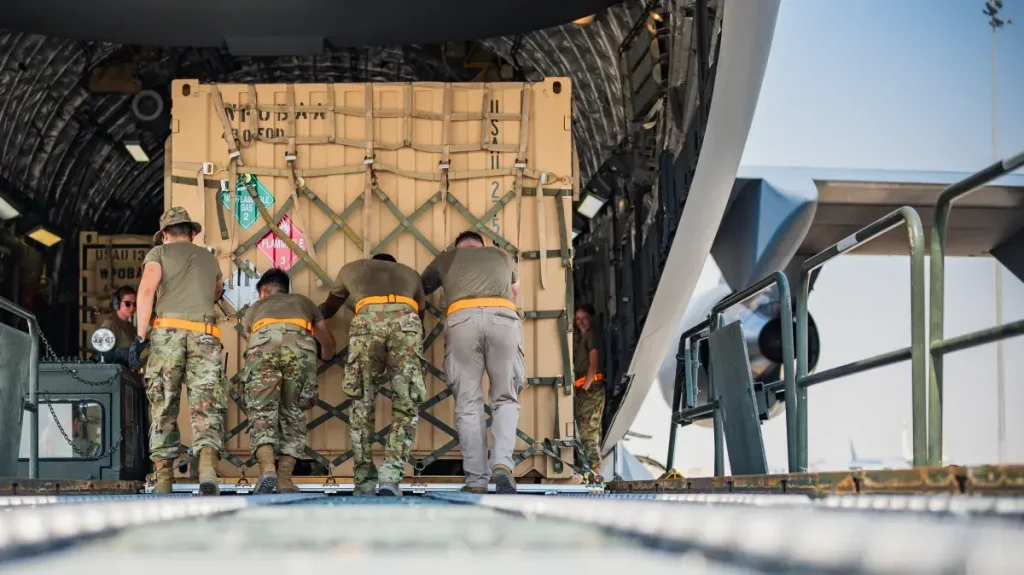The Hidden Cost of Gaza War: America’s $30 Billion Military Investment
Over the past two years, as the world has watched the devastating human toll of the Gaza conflict unfold, a less visible but equally significant cost has been accumulating on the balance sheets of the United States government. According to a comprehensive study released by the Costs of War project at Brown University’s Watson Institute, American taxpayers have shouldered over $30 billion in expenses related to the Gaza war and its regional spillover effects. The report, published on the two-year anniversary of Hamas’s October 7 attack that ignited the conflict, reveals that more than half of this astronomical sum—$21.7 billion—has been directed toward military aid for Israel between October 2023 and September 2025. An additional $9.65-$12.07 billion has been spent on U.S. operations in Yemen, Iran and elsewhere in the Middle East as the conflict expanded beyond Gaza’s borders. These figures represent an unprecedented spike in military assistance to Israel, which typically receives $3.8 billion annually under a long-standing agreement. In the first year of the Gaza war alone, that support skyrocketed to $17.9 billion—the highest level in history—before returning to normal levels in the second year, though the initial surge continues to finance ongoing operations.
As the conflict has evolved, so too has American public opinion, reflecting deepening divisions over U.S. support for Israel’s military campaign. Recent polling from The New York Times and Siena College indicates a significant shift in sentiment; immediately following the Hamas attack, 47 percent of Americans expressed greater sympathy for Israel than Palestinians, but that figure has now dropped to 34 percent, with 36 percent more sympathetic to Palestinians. Perhaps most telling, a narrow majority—51 percent—now opposes providing additional military and economic support to Israel. This changing landscape of public opinion comes amid persistent protests across the United States and growing international condemnation of Israel’s military operations in Gaza, where more than 64,000 Palestinians have reportedly died. Critics have accused Israel of war crimes, including deliberately targeting civilians and restricting humanitarian aid—allegations Israeli officials strongly deny, countering that Hamas uses civilians as human shields and diverts assistance, claims the militant group rejects.
The regional expansion of the conflict has drawn the United States into direct military involvement, challenging the Trump administration’s campaign promises to avoid costly foreign entanglements and foster greater global peace. American forces have defended Israel against Iranian attacks, conducted unprecedented strikes on Iranian nuclear sites, targeted Yemen’s Houthi rebels (Ansar Allah), and struck militias in Iraq. These operations have proven exceptionally expensive, depleting Pentagon stockpiles of high-value munitions and resulting in the loss of three $70 million F/A-18 Hornet aircraft during confrontations with the Houthis. The financial burden extends beyond immediate operational costs, as noted by report co-author Linda Bilmes of Harvard University, who emphasized that “the full budgetary impact is likely to increase as replacement and sustainment requirements mature.” She argues that American taxpayers have a right to understand how their money is being used in conflicts and that these often-hidden costs should be central to discussions about U.S. foreign policy in the Middle East.
William Hartung, the report’s co-author and senior research fellow at the Quincy Institute for Responsible Statecraft, offers a pointed critique of America’s extensive military support for Israel throughout the conflict. “Recent U.S. aid does not serve U.S. interests,” Hartung stated, arguing that the massive assistance has enabled “disproportionate” Israeli attacks on Gaza that will generate enmity toward the United States throughout the Middle East and beyond for years to come. He distinguishes current military aid from earlier eras when U.S. support focused primarily on deterring potential attacks on Israel by Arab states, as occurred in 1967 and 1973. Instead, today’s aid has facilitated offensive operations, including the bombing of Iran, which Hartung suggests is “more likely to spur retaliation and escalation than stabilize the region.” This assessment highlights the tension between America’s traditional role as Israel’s defender and growing concerns about the strategic wisdom and moral implications of unconditional support for Israel’s military campaign.
Despite the enormous costs and regional instability, recent diplomatic developments offer a glimmer of hope for resolution. The White House recently unveiled a 20-point peace proposal that would permanently end the conflict, secure the release of hostages and prisoners, withdraw Israeli forces from Gaza, and replace Hamas governance with an independent committee of Palestinian experts led by Trump. Hamas responded positively to this initiative, which Trump characterized as indicating the group was “ready for lasting peace,” prompting him to call on Israel to “immediately stop the bombing of Gaza.” White House Press Secretary Karoline Leavitt confirmed that “technical talks” were underway in Egypt as the administration works to advance the peace process. However, even a successful resolution would likely maintain or potentially increase America’s regional commitments, as evidenced by Trump’s recent security guarantee to Qatar following strikes on the Gulf nation by both Iran and Israel. The U.S. also continues military operations against ISIS in Syria and Iraq, where new tensions between the Syrian government and U.S.-backed forces present additional challenges.
The path forward remains uncertain, with Trump himself acknowledging the high stakes of the current moment. On his Truth Social platform, he emphasized that “TIME IS OF THE ESSENCE OR, MASSIVE BLOODSHED WILL FOLLOW—SOMETHING THAT NOBODY WANTS TO SEE!” This stark warning underscores the volatility that continues to characterize the region despite diplomatic efforts. As America’s financial investment in the Gaza conflict approaches $34 billion, with potential for further increases, questions persist about the sustainability and wisdom of this approach. The massive expenditure comes at a time when domestic needs remain pressing, from infrastructure to healthcare, education, and climate resilience. For American taxpayers and policymakers alike, the Costs of War report offers a sobering reminder that military interventions carry not only humanitarian and geopolitical implications but also tremendous financial burdens that extend far beyond the immediate battlefield and continue long after the fighting ends.


